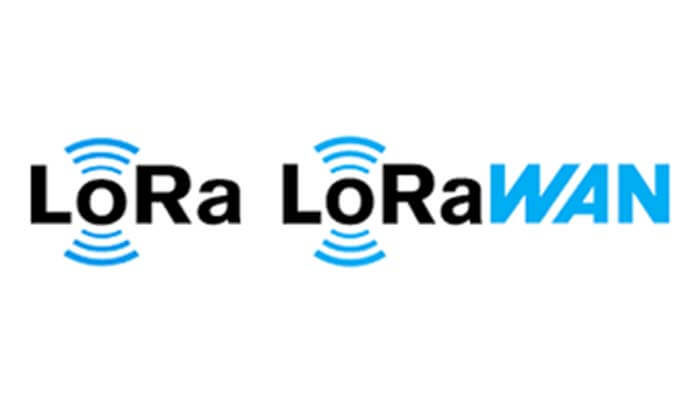LoRa and LoRaWAN are the two hottest wireless communication technologies in IoT, and it is hard for many people who are new to IoT to distinguish the difference between LoRa and LoraWAN.
First, let’s know about the difference between LoRa and LoraWAN technologies.

What is LoRa technology?
LoRa, whose full name is Long Range is a low-power, long-range wireless standard for local area networks, and is a wireless modulation method developed by Semtech.
Its biggest feature is that it can propagate farther than other wireless methods (GFSK, FSK, etc.) with the same power consumption, overcoming the problem of coexistence of low power consumption and long range.
It expands the distance as much as 3-5 times than the traditional wireless RF communication under the same parameters.
LoRa operates in free frequency bands such as 169 MHz, 315 MHz, 433 MHz, 868 MHz, 915 MHz, etc. Compared with traditional FSK technology and short-range RF technology with insufficient security and stability, LoRa based on CSS modulation technology greatly increases the communication range while maintaining low power consumption.
Advantages of LoRa
The advantages of LoRa are mainly reflected in the following aspects.
LoRa uses linear spread spectrum modulation technology with up to 157dB link budget to enable communication over 15KM (environment dependent)
Minimal base design cost, easy to build and deploy using gateways/concentrators to expand system capacity
Receive current 5mA, sleep current <200mA, greatly extending battery life
LoRa network works in unlicensed band, low infrastructure and operation cost
LoRaWAN is a set of communication protocols and system architecture designed based on LoRa long-distance communication network. LoRaWAN is also known as LoRaMAC because it is the MAC layer and LoRa is the physical layer according to protocol layering.
What is LoRaWAN technology?
LoRaWAN is an open standard that defines the communication protocol for LoRa chip-based LPWAN technology and LoRaWAN defines Media Access Control (MAC) at the data link layer. The protocol is maintained by the LoRa Alliance.
LoRaWAN network architecture
- LoraWan node module
LoraWan node module is responsible for data collection or executing actions.
- Gateway module
The gateway module is divided into two types, the first one is only responsible for data transit; the second one is data can be processed inside the gateway.
The second kind of module internally implements the function of a small LoRaWAN server software, which is responsible for managing the node module and data parsing output, input encryption, etc.
- Server
responsible for data processing, saving, displaying, etc. of data collected back by node module.
Types and applications of LoRaWAN
LoRaWAN node modules work in three main ways: Class A, Class B, and Class C
Class A
Class A belongs to asynchronous communication. Asynchronous means that when one node finishes transmission, another node will only start to initiate transmission to avoid data collision.
And the Class A module will only transmit when it is needed, and most of the time it is dormant. Therefore, Class A node modules are mainly used in low-power areas.
Class B
Class B is based on Class A with the addition of time synchronization, which makes it very complex.
Class C
Class C is in receiving state except for the need to send data, which also means that Class C will be very high in terms of power consumption.
LoRaWAN's working mode
LoRaWAN is a star or star-to-star topology, where nodes can only send data to gateways, and communication cannot be generated between nodes and nodes, or between gateways.
Multiple node modules correspond to a gateway for communication transmissions, and the gateway has 8 parallel transceiver channels, each corresponding to a frequency, and each channel can receive all SFs (spread spectrum factor) respectively.
The transmitting interval is random, and the channel used for each packet of data is random, so the possibility of data collision can be greatly reduced; different SFs will not interfere with each other, and ADR technology (automatic rate adjustment) can be realized by using this.
What is the difference between LoRa and LoraWAN frequency band?
LoRa mainly operates in free frequency bands such as 433 MHz, 868 MHz, 915 MHz, so do LoraWAN frequency bands. There is no difference between LoRa and LoraWAN frequency bands. LoRa antenna can be the same usage as LoraWAN antenna.
The big difference between LoRa and LoRaWAN
The big difference between LoRa and LoRaWAN is that LoRaWAN is a protocol. By protocol, we mean that a set of rules and processes are specified. Any LoRaWAN-compliant node in LoRaWAN needs to follow the LoRaWAN requirements to communicate.
LoRa, on the other hand, is a modulation method, and LoRaWAN is an application built according to LoRa modulation method.
Simply speaking, the LoRaWAN module uses a common LoRa module and then follows certain rules to set parameters or send and receive signals.
Generally speaking, LoRa node module cannot produce communication with the LoRaWAN node module, even if all parameters of both modules are the same.
Besides the What Is The Difference Between LoRa and LoraWAN article, you may also be interested in the below articles.
What is the difference between WIFI and WLAN?
Summary of 41 Basic Knowledge of LTE
What Are The Advantages And Characteristics Of NB-IoT And LoRa?
What Is The 5G Network Slicing?
